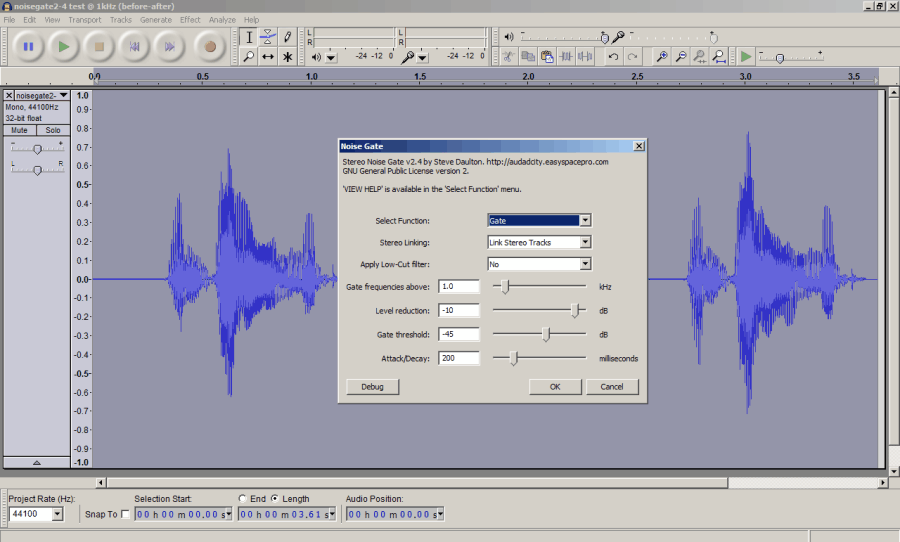Noise gate 2-4 seems to work nicely: the hiss at the start of this recording is reduced …
Odd thing I noticed is the envelope of the “after” waveform looks slightly different from the “before” …
although I can’t hear a difference in the audio there are very slight changes in the before and after spectra of the speech.
NB: I did not select the “low cut”, which would affect the speech waveform,
the only operation applied was the noise gate which should not alter any of the speech, only reduce hiss in the “silence” at the start …
[BTW The gate frequency selected is a factor: the lower the gate frequency the more the change in the “after” envelope.]
